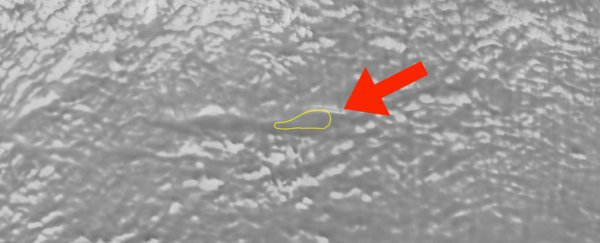The Antarctic ice is finding its secrets harder and harder to keep.
Deep below the ice of the East Antarctic Ice Sheet, the largest ice sheet in the world, scientists have confirmed the existence of a huge lake of liquid water.
Researchers have named it Lake Snow Eagle, and believe that sediments within it could contain information about the evolution of the Antarctic ice sheet from its very earliest formation.
"This lake is likely to have a record of the entire history of the East Antarctic Ice Sheet, its initiation over 34 million years ago, as well as its growth and evolution across glacial cycles since then," says geophysicist Don Blankenship of The University of Texas at Austin's Institute for Geophysics.
"Our observations also suggest that the ice sheet changed significantly about 10,000 years ago, although we have no idea why."
Although East Antarctica is the coldest place on Earth, it's not completely frozen. Hundreds of lakes of liquid water – known as subglacial lakes – have been discovered hidden beneath the ice that covers the continent.
There are a number of factors at play that allow these reservoirs to exist. The mass of the ice sheet produces pressure, which dramatically lowers the freezing point of water trapped beneath it.
In addition, the ice sheet itself provides insulation against the frigid air, while rocks below provide a source of gentle heating. What's more, if the water is briny, saturated with salts, that too can lower the freezing point further.
We can detect subglacial lakes by using ice-penetrating radar from above. The radar signal is propagated through the ice and bounced back, and by comparing the transmitted signal with the returned signal, scientists can study what's below the ice.
A radar signal that bounces back through liquid water is brighter, or more reflective, than other media.
In the case of Lake Snow Eagle, the first hint was a large depression observed in the ice sheet, revealed by satellite images.
So a research team, led by geophysicist Shuai Yan of The University of Texas at Austin, set about obtaining radar data for the region, as well as measurements of Earth's magnetic field, over a period of three years, from 2016 to 2019.
Analysis of the radar data revealed a large patch, deep below the ice, shining brightly. This, the researchers confirmed, was Lake Snow Eagle: one of the largest subglacial lakes ever discovered.
"I literally jumped when I first saw that bright radar reflection," Yan says.
The body of water lies some 3.2 kilometers (2 miles) below the ice sheet, and it's substantial. It measures some 42 kilometers in length and 15 kilometers in width, covering an area of 370 square kilometers, and containing 21 cubic kilometers of water, with a depth of 200 meters (656 feet).
Lake Snow Eagle sits in a jagged canyon 1.6 kilometers deep, buried beneath the ice, but the radar reflections reveal that there's more than just water in the hidden lake.
At the bottom of the lake sits a layer of unconsolidated sediment. Given how long it takes sediment to accumulate in these subglacial environments, the team believes it must have been there for a very long time – perhaps since before the ice sheet even formed.
"This lake's been accumulating sediment over a very long time, potentially taking us through the period when Antarctica had no ice at all, to when it went into deep freeze," says glaciologist Martin Siegert of Imperial College London in the UK.
"We don't have a single record of all those events in one place, but the sediments at the bottom of this lake could be ideal."
Given that it's trapped under several kilometers of ice in one of the most hostile environments on Earth, actually getting to the lake to investigate it further is likely to prove the next challenge.
The team proposes that a station be installed close by, to facilitate future efforts to study the mysterious lake and sample its ancient sediment.
The research has been published in Geology.
